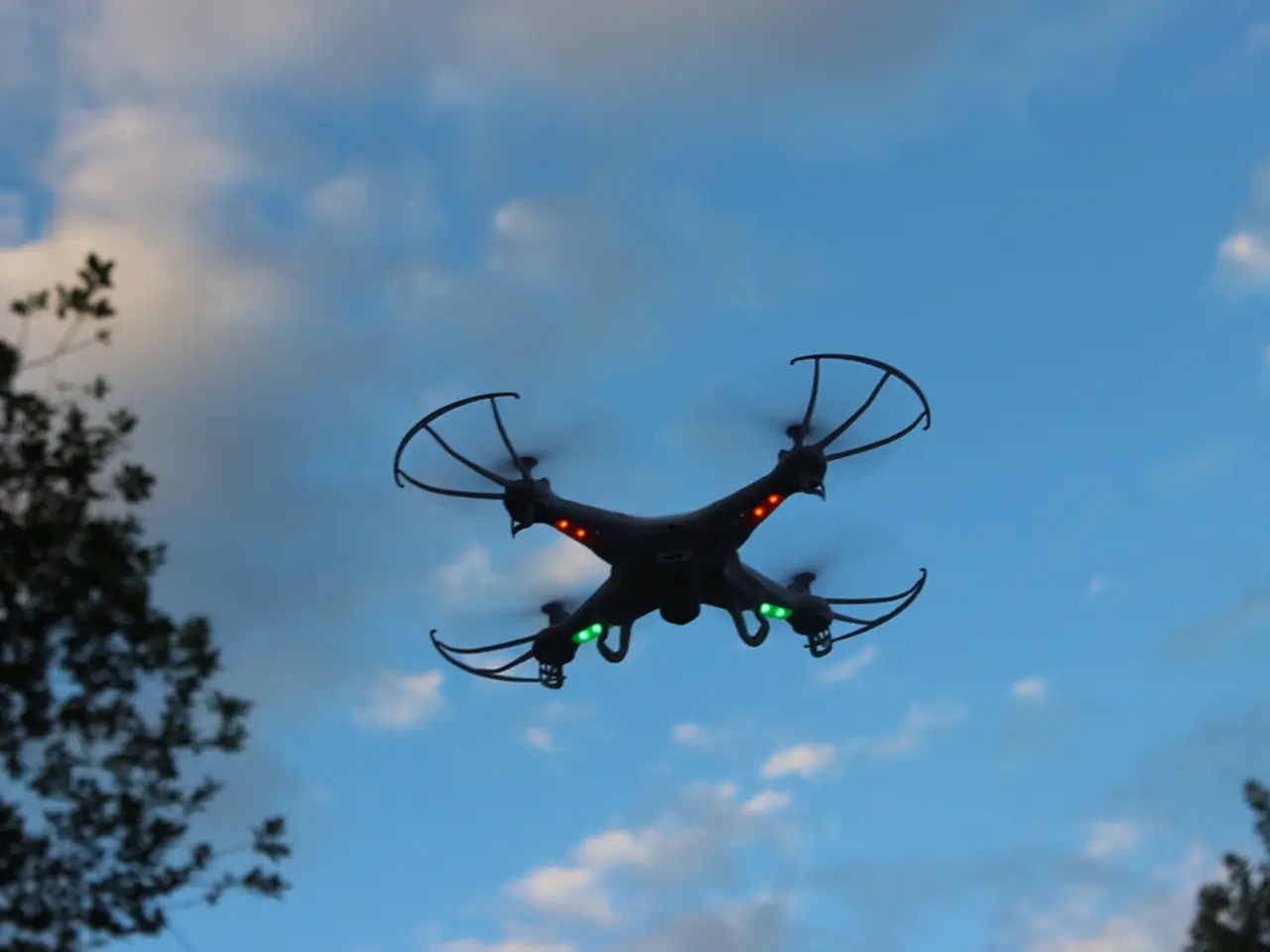Unveiling DFR-EU: Boosting European Safety with Autonomous Drone Management
European public safety agencies are revolutionizing their emergency response efforts with the DFR-EU technology, enhancing speed, safety, and effectiveness. This transformation is particularly notable in the deployment of drones, which provide real-time information and situational awareness without putting human lives at risk, especially in dangerous scenarios.
The European Advantage
The European regulatory landscape for drones is more advanced and harmonized compared to the United States, providing a standardized approach across member states. Drone Operations Centers support public safety agencies, security companies, and organizations in Europe, the Middle East, and South America.
European public safety drone programs tend to operate under stringent compliance requirements with coordinated airspace management through U-Space services, focusing on risk assessment and secure integration within urban environments. This approach ensures consistent compliance with EU directives, even in Beyond Visual Line of Sight (BVLOS) operations.
Due to harmonized regulations, European agencies invest notably in counter-drone (anti-UAS) technologies to protect critical infrastructure, public events, and borders, reflecting concerns about emerging drone threats alongside public safety applications.
The American Approach
In contrast, the USA's public safety agencies are more decentralized, featuring numerous smaller agencies with smaller drone teams. The FAA governs drone use with clear distinctions between recreational and commercial operations, including strict registration, pilot certification, and safety compliance such as Remote ID and flight waivers for flights beyond visual line of sight (BVLOS).
Public safety drone programs in the United States are often integrated within specialized tactical units or first responder branches. For example, the Los Angeles Police Department recently moved drone oversight from aviation divisions to the Office of Special Operations to better align drone deployments with tactical and emergency response units.
The focus in the United States is on rapid deployment, situational intelligence, and integration with existing emergency response protocols.
A Balance of Speed and Security
Both Europe and the United States recognize the importance of balancing speed and security in emergency response. Drones can reach incident sites within minutes, often faster than ground patrol units, providing a critical time advantage in emergencies. To protect privacy, we are developing advanced blurring tools to protect privacy while enabling effective operations.
Our system supports tools to track pilot training, monitor pilot proficiency, and schedule maintenance activities. Additionally, the platform ensures strict compliance with standard operating procedures (SOPs) and regulatory frameworks, and the system supports the integration of drone docking stations, such as the DJI Dock, which are being introduced in European communities, merging American and European methods.
The platform enables first responders to deploy drones within minutes and share video streams instantly, revolutionizing emergency response efforts worldwide. For more information about our Drone Operations Center, visit our website. Our software features a Secure Data Mode to prevent data leakage and ensure secure operation of drones.
- The European regulatory landscape for drones, including airspace management and compliance, is more advanced and harmonized than the United States, fostering the growth of Drone Operations Centers.
- European public safety drone programs operate with rigorous compliance requirements, focusing on risk assessment and secure integration within urban environments, in line with EU directives.
- European agencies also invest in counter-drone technologies to protect critical infrastructure, events, and borders, acknowledging emerging drone threats.
- In contrast, the USA's public safety agencies feature numerous smaller agencies, with each having smaller drone teams and distinct regulations for recreational and commercial operations.
- US public safety drone programs are often integrated within specialized units or first responder branches, like the Los Angeles Police Department's shift from aviation divisions to the Office of Special Operations.
- Speed and security are balanced in both regions, with drones being vital in reaching incident sites quickly while maintaining privacy protection through advanced blurring tools.
- The platform developed supports tools for pilot training tracking, proficiency monitoring, and maintenance scheduling, ensuring compliance with standard operating procedures (SOPs) and regulatory frameworks.
- The integration of drone docking stations, such as the DJI Dock, is facilitated by the platform, merging American and European methods, revolutionizing emergency response efforts globally, with a secure data mode to prevent data leakage and ensure secure drone operation.




